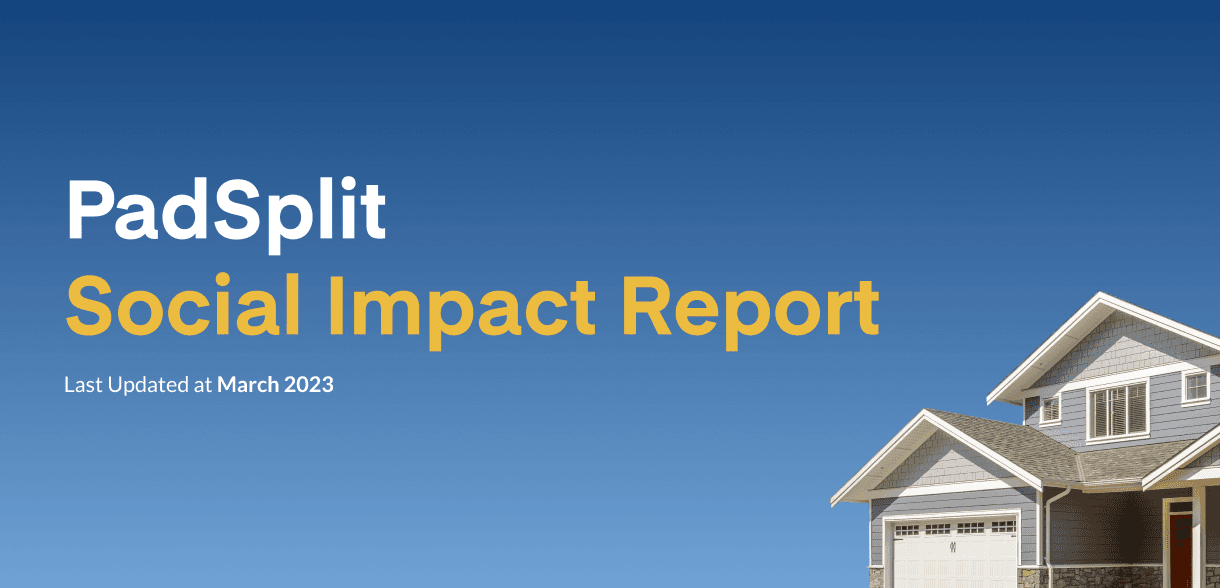Starting a new degree is exciting, but finding affordable student housing can be challenging. Studies show 60% of college students face housing insecurity during their education, with rising costs and limited options creating significant hurdles.
Many students struggle to choose between on-campus convenience and off-campus independence while staying within budget. Whether you’re attending full-time at a university or taking part-time community college classes, PadSplit offers an alternative to traditional student housing options.
Let’s explore the pros and cons of different housing arrangements to help you make an informed decision for this next chapter of your education.
Student Housing Option 1: Living On Campus
Option 1: On-Campus Housing
Living on campus offers an authentic college experience through residence halls, dormitories, and sometimes student apartments. This traditional housing choice puts you at the heart of campus life, surrounded by fellow students.
Would you like me to outline the specific advantages and disadvantages of on-campus housing?
Advantages of On-Campus Housing
- Prime Location: Walk to classes, events, libraries, and campus facilities within minutes
- Built-in Amenities: Access to dining halls, gyms, and laundry facilities
- Social Connection: Easy opportunities to meet peers, join activities, and build your college community
The Disadvantages of On-Campus Housing
- Limited Privacy: Shared rooms and communal bathrooms mean less personal space
- Campus Regulations: Must follow strict rules about visitors, curfews, and room policies, enforced by resident advisors
- Significant Cost: Average annual expenses range $11,620-$13,120 (2020-21), typically including mandatory meal plans
- Limited Availability: Not all schools offer on-campus housing, and some restrict it to full-time students
- Note: Some students may offset costs through financial aid or scholarships.
Student Housing Option 2: Living Off-Campus
Living off-campus offers independence and personal space but requires more responsibility and often higher costs. Let me break down the key considerations.
The Pros of Off-Campus Housing
- Enhanced Privacy: Private bedrooms and fewer shared spaces
- More Room: Larger living areas compared to dorm rooms
- Independence: Freedom from dorm rules and curfews
- Flexible Location: Choose housing near campus, work, or preferred neighborhoods
The Cons of Off-Campus Housing
- Transportation Challenges: Need reliable transport to campus; parking passes and commute time add costs
- Reduced Campus Connection: Less integrated with student life and activities
- Higher Expenses: Average rent around $1,200/month plus utilities, deposits, and insurance; may require credit check or cosigner
- Long-Term Commitment: Standard 12-month leases often exceed the academic year, requiring summer rent payments or subletters
Hypothetical Scenarios: Choosing the Right Housing Option
Scenario 1: The Social Butterfly
- Persona: Jamie is an extroverted freshman who loves meeting new people and participating in every campus event possible. They thrive in busy environments and want to immerse themselves in the college experience.
- Best Fit: On-Campus Housing
Jamie would benefit from the community-focused environment of on-campus housing. Being close to their peers and campus activities would provide endless opportunities for socializing and involvement.
Scenario 2: The Budget-Conscious Planner
- Persona: Alex is a part-time student with a tight budget. They work evenings to help pay for classes and need a cost-effective housing option that allows them to save money while staying flexible.
- Best Fit: PadSplit
PadSplit offers Alex an affordable, furnished private room with utilities included, at an average cost of $663 per month. The weekly payment structure aligns with Alex’s weekly paycheck, making budgeting simpler.
Scenario 3: The Introvert
- Persona: Taylor is a quiet, reserved student who values their personal space. They need a place where they can decompress after classes and focus on studying without constant interruptions.
- Best Fit: Off-Campus Housing
Taylor might find the privacy and solitude of a traditional rental or a PadSplit room to be ideal. Having a private room allows them to recharge while still enjoying occasional interaction with housemates if desired.
Scenario 4: The Commuter
- Persona: Sam is a student-athlete attending college on a scholarship. They need housing close to both the campus and their part-time job but can’t afford to spend time commuting long distances every day.
- Best Fit: On-Campus Housing
Proximity to academic buildings, the gym, and dining halls would make on-campus living the most practical choice for Sam, minimizing commute time and maximizing efficiency.
Scenario 5: The Independent Adventurer
- Persona: Casey is a junior who loves exploring their city. They want the freedom to live off-campus and choose a neighborhood that suits their lifestyle while still staying connected to college life.
- Best Fit: Off-Campus Housing
Living off-campus provides Casey with the freedom to live closer to their favorite coffee shops and parks while still commuting to campus for classes and events.
Comparing the cost of student housing vs. off-campus housing
Recent data highlights significant trends and costs in student housing, underscoring the financial considerations students must navigate when choosing between on-campus and off-campus living.
On-Campus Housing Costs:
- According to the National Center for Education Statistics (NCES), the average annual cost for on-campus room and board at four-year public institutions was $12,801 for the 2023-2024 academic year. College Raptor
Off-Campus Housing Costs:
- For students living off-campus (not with family), the average annual cost for housing and food was $12,535 during the same period. College Raptor
Cost Comparison:
- While off-campus housing appears slightly less expensive on average, it’s important to consider additional expenses such as utilities, transportation, and potential lease commitments that can affect overall costs.
Rental Growth Trends:
- The student housing sector has experienced notable rent increases. As of March 2024, properties located 0.5 to 1 mile from campus saw an average rent growth of 7.3%, compared to a 5.8% average across all properties. Statista
Occupancy Rates:
- Occupancy rates in student housing have remained robust, with an average of 90% during the academic year, indicating sustained demand. World Metrics
Alternative Housing Solutions:
- Platforms like PadSplit offer cost-effective alternatives, with members spending an average of $663 per month for a private, furnished room, including utilities and internet. This model provides flexibility and affordability, addressing common financial challenges faced by students.
The Best Off-Campus Student Housing Option: PadSplit
Fortunately, not all off-campus housing solutions are expensive. PadSplit combines the pros of both on-campus and off-campus housing, making it the best option for student housing.
PadSplit is a co-living membership program. Residents get a private, furnished room, utilities, internet access, and laundry facilities for a fixed weekly payment. There’s no minimum credit score required, and PadSplit doesn’t lock Members into a long-term lease. In fact, after an initial one-month commitment, Members pay by the week and can stay for as long or as short as they’d like.
On average, PadSplit Members spend an average of $663 per month on their housing, helping them save for future endeavors.
Frequently Asked Questions (FAQs) About PadSplit for Students
1. Is PadSplit a secure option?
PadSplit prioritizes resident security through:
- Secure locks on all rooms
- Strategic property locations in well-maintained neighborhoods
- Background checks for all Members to maintain a responsible community
2. How flexible is PadSplit’s membership?
PadSplit is designed with flexibility in mind. After an initial one-month commitment, Members can stay as long as they like or leave with just seven days’ notice. This is perfect for students who may need to relocate for internships, transfer schools, or adjust their living situation based on academic terms.
3. Can I live in a PadSplit if I don’t have a credit score or guarantor?
Yes! PadSplit does not require a minimum credit score or a guarantor, making it accessible for students who might not have an established credit history. The application process is straightforward, with only a $19 fee for background verification (where available).
4. Will I have to share a room with others?
No. PadSplit offers private, furnished rooms for every Member. While you’ll share common areas like the kitchen, living room, and bathroom with other housemates, your room is exclusively yours.
5. What’s included in the weekly payment?
Your weekly payment covers your private room, utilities, internet access, and laundry facilities. This all-inclusive pricing helps students avoid surprise expenses and makes budgeting easier.
6. How does PadSplit handle roommate concerns?
PadSplit creates a positive living environment by matching Members thoughtfully and enforcing community guidelines. If conflicts arise, Members can report issues through PadSplit’s platform, and the team will step in to help resolve them.
7. Can I stay in PadSplit housing during school breaks?
Absolutely! Since PadSplit doesn’t require long-term leases, you can stay during school breaks or move out when needed. This flexibility makes it a great option for students with varying schedules.
8. How quickly can I move in?
After your application is approved, you can browse available rooms and move in within 48 hours. This quick turnaround is ideal for students needing housing on short notice.
9. What do other students say about living in a PadSplit?
Many student Members love the affordability and convenience. For example, Jacqueline, a full-time student, says, “I love paying weekly instead of monthly and knowing all my utilities are covered. It’s helped me budget better and focus on school.”
Become a PadSplit Member
Becoming a PadSplit Member is fast and easy! After you fill out background and employment verification forms, you’ll pay a one-time $19 application fee to cover your background screening (where available). Once approved, you can browse available rooms, book your PadSplit, and move in within 48 hours.
Full-time student and PadSplit Member Jacqueline says, “As a full-time student, PadSplit has worked out really well for me. I get paid weekly, so I love paying my rent weekly instead of monthly and knowing all my utilities are covered. It’s helped me budget better because I know what I can and can’t spend after paying for the essentials.”
More than 7,700 people — including hundreds of students like Jacqueline — have trusted PadSplit to find an affordable place to live. Start your membership application today.





